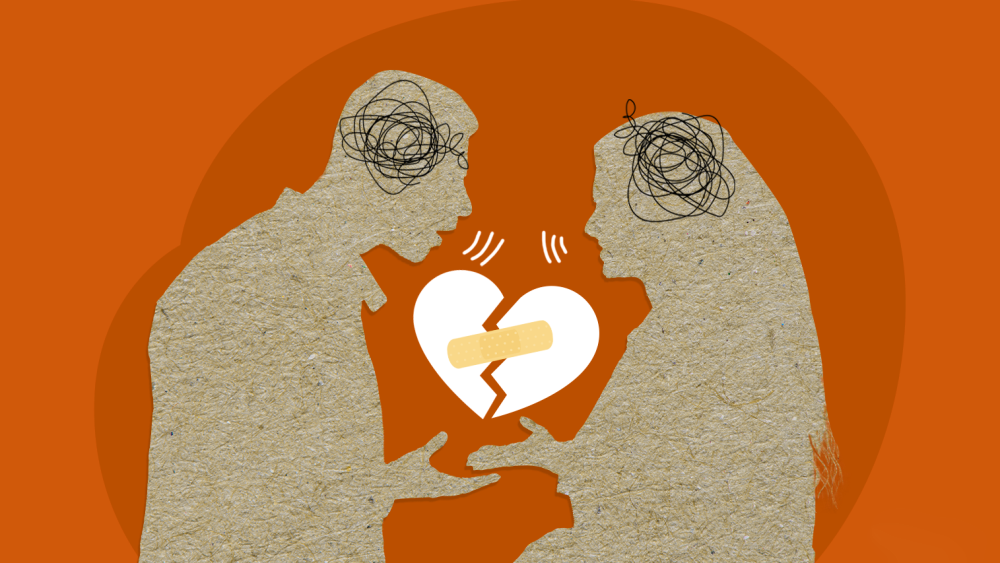
In every relationship, conflicts are inevitable, yet not all conflicts are created equal. Many couples and friends find themselves at a crossroads without clear guidance, wondering why some disagreements foster deeper connections while others damage trust. In this article, we dive into the core differences between healthy and harmful conflicts, exploring the underlying dynamics that fuel each type. By examining communication styles, emotional responses, and conflict resolution methods, we provide practical strategies to help you transform disputes into opportunities for growth. Whether you seek clarity on conflicts sanos y dañinos or need a roadmap to enhance your relational health, keep reading as we uncover essential insights for every relationship.
Understanding Healthy Conflicts
Healthy conflicts emerge when both parties feel secure enough to share their honest opinions and emotions. In this safe space, disagreements are seen not as battles to be won, but as opportunities to understand each other’s perspectives more deeply. This approach fosters open dialogue, underpinned by emotional honesty and mutual respect, transforming simple disputes into powerful tools for relationship growth.
A key aspect of healthy conflicts is creating an environment where active listening is the norm. Empathy allows each partner to express their needs while considering those of the other, which can lead to greater satisfaction and trust over time. Research shows that couples who engage in thoughtful conversations during disagreements often discover new solutions and enhance their intimacy. The role of open communication is central in converting conflicts into meaningful growth opportunities.
Another important element in healthy conflicts is the willingness to apologize and forgive. When both partners acknowledge their contributions to a disagreement and take responsibility, resolution becomes achievable. By identifying and addressing the root causes, couples develop strategies that prevent recurring issues. This commitment to constructive conflict resolution lays a strong foundation for building trust and emotional resilience.
Identifying Harmful Conflicts
Harmful conflicts often lead to stress, resentment, and even the breakdown of relationships. Unlike healthy disagreements that promote growth, harmful disputes create cycles of negativity and a sense of alienation. When discussions turn into personal attacks or the use of aggressive language, the foundation of trust starts to collapse. Indicators such as contempt, criticism, and even subtle sarcasm signal that the conflict has become toxic. It is essential to distinguish a temporary misunderstanding from persistent harmful behavior.

A hallmark of harmful conflicts is the absence of mutual respect. Instead of listening, one or both individuals may resort to interrupting, belittling, or using derogatory language. Such patterns, if repeated, can cause long-term damage to both self-esteem and the relationship bond. Studies have confirmed that sustained exposure to aggressive conflict styles is linked with increased stress hormone levels, contributing to mental and physical health issues. The correlation between ongoing conflict and health deterioration is significant and warrants immediate attention.
Moreover, harmful conflicts are characterized by rigid attitudes and an unwillingness to see alternative perspectives. When both parties approach issues with preset notions and avoid compromise, the dialogue becomes unproductive, deepening resentments over time. The inability to offer sincere apologies or acknowledge personal faults only intensifies the negativity. In contrast to healthy, forgiving interactions, harmful conflicts build emotional walls that hinder growth. Recognizing these early signs is crucial, and if the pattern persists, seeking professional help may be the key to breaking destructive cycles.
Comparing Healthy vs Harmful Conflicts
To fully understand relationship dynamics, it is helpful to compare healthy conflicts side by side with harmful ones. Healthy conflicts thrive on mutual respect, active listening, and a shared commitment to growth. In contrast, harmful conflicts rely on blame and aggression, often leaving both partners with lasting emotional scars. Knowing these differences can help you recognize when a conflict is acting as a bridge to deeper intimacy rather than a barrier.
Communication plays a pivotal role in this comparison. In healthy exchanges, every participant is afforded the opportunity to speak and be heard. Phrases like ‘I feel’ or ‘I need’ help express emotions without casting blame, smoothing the path to resolution. Conversely, harmful conflicts are marked by accusatory and dismissive language, which further alienates partners and hampers resolution. Research indicates that couples who use positive language are more successful in managing conflicts. The language we choose can be decisive in shaping the outcome of disagreements.

Furthermore, healthy and harmful conflicts differ in their underlying intentions. Healthy conflicts focus on learning, adapting, and growing together. Each disagreement offers feedback to improve personal behavior and the relationship overall. In contrast, harmful conflicts often aim to establish dominance or justify past actions, masking deeper issues that remain unaddressed. By understanding these fundamental differences, you can navigate conflicts with a more informed and constructive mindset.
Transforming Conflicts: Strategies and Insights
Transforming conflict from harmful to healthy is a journey that requires deliberate effort and self-awareness. One of the first steps is to recognize personal triggers and practice mindful responses. This intentional self-awareness is essential in preventing conflicts from spiraling into destructive territory. Being mindful of your reactions lays the foundation for healthier interactions.
Alongside personal introspection, effective communication techniques are crucial. Active listening—genuinely trying to understand your partner’s perspective—can convert adversarial situations into collaborative problem-solving sessions. Techniques like reflective listening, where you paraphrase the other person’s thoughts, often lead to more constructive outcomes. Planning calm, scheduled discussions rather than confronting issues in the heat of the moment preserves dignity and ensures that everyone feels heard. Collaborative communication is a powerful tool for de-escalation.
Sometimes, professional guidance from counselors or therapists is needed to break entrenched negative patterns. Experts often stress that external mediation provides a safe space to discuss issues, validate emotions, and experiment with healthier interaction patterns. Many couples find that structured sessions not only improve their communication but also rekindle trust. A mutual commitment to change, paired with professional advice, can transform even the most toxic disagreements into opportunities for reconnection and healing.
Final Thoughts and Reflection

Reflecting on the insights shared, it becomes clear that understanding the differences between healthy and harmful conflicts is essential for any thriving relationship. The ability to discern and manage conflict not only fosters personal growth but also deepens intimacy, creating a more resilient bond.
As you integrate these insights into your daily life, remember that conflicts are not inherently negative. It is the approach and the intent behind them that determine whether they serve as stepping stones to growth or stumbling blocks to connection. Embrace techniques that cultivate empathy, respect, and honesty, and challenge any destructive patterns that emerge.
Finally, if you find yourself repeatedly facing harmful conflicts, consider further education or professional advice. Continuous learning and mutual commitment can transform recurring challenges into opportunities to create a healthier, more balanced relationship.
Content Additional
Beyond the core topic of conflict management, it is important to emphasize the role of self-care in mitigating the impacts of harmful interactions. When you invest in your own well-being—whether through mindfulness, exercise, or hobbies—you become better equipped to handle stressful encounters. Self-care is not selfish; rather, it ensures that you have the energy and emotional capacity to contribute positively to your relationships. Remember, you cannot pour from an empty cup.

Another crucial aspect is understanding the influence of cultural context on conflict. Relationships are embedded within social, cultural, and generational frameworks that shape communication styles. For example, indirect communication common in some cultures might be misinterpreted by someone accustomed to a more direct approach. In such cases, cultural empathy becomes vital for bridging communication gaps and achieving mutual understanding.
Additionally, modern technology has transformed the way we manage conflicts. Digital tools like social media, messaging apps, and video calls offer both advantages and challenges. While they allow quick communication and immediate clarification, they can also strip away nonverbal cues essential for compassionate dialogue. Balancing digital exchanges with face-to-face interactions is key to ensuring that emotional context is preserved. The interplay between technology and personal interactions defines contemporary conflict resolution, requiring conscious effort to maintain empathy and clarity.
In closing, grasping the nuances between healthy and harmful conflicts is crucial for nurturing long-term, fulfilling relationships. By recognizing the warning signs of destructive interactions and adopting strategies that promote respectful, empathetic communication, you can turn challenges into opportunities for mutual growth. Remember, when managed properly, conflict becomes a powerful catalyst for change, innovation, and resilience. The key is commitment, self-awareness, and the willingness to evolve together.




